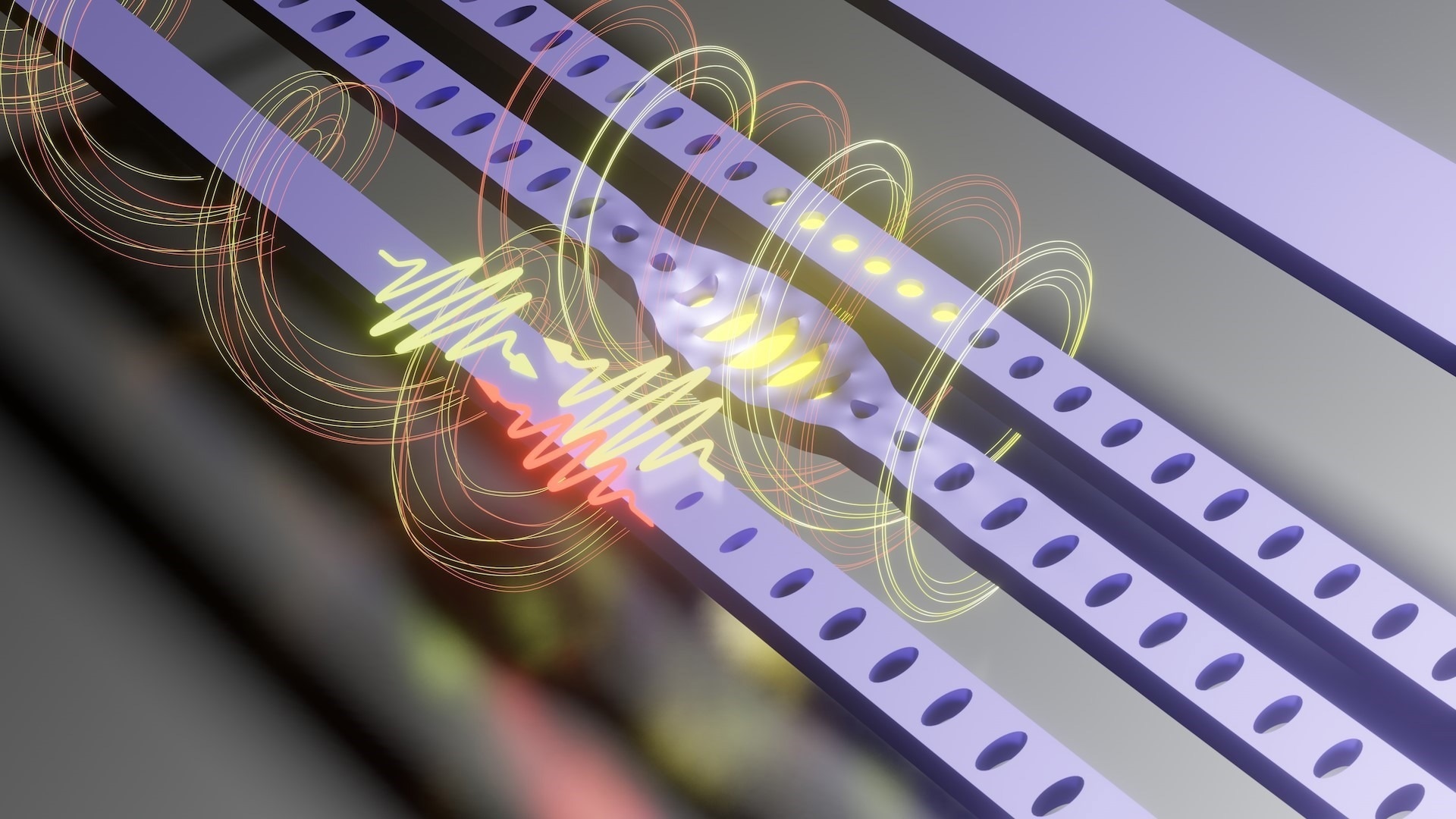Achieving coherent information transmission across the electromagnetic spectrum from microwave to infrared is critical to the development of sophisticated quantum networks for communications and computation.
 Illustration of the process of light scattering inside the cavity directly to the waveguide through interaction between the optical and mechanical domains. Image Credit: André Garcia Primo/UNICAMP
Illustration of the process of light scattering inside the cavity directly to the waveguide through interaction between the optical and mechanical domains. Image Credit: André Garcia Primo/UNICAMP
In cooperation with colleagues at ETH Zurich in Switzerland and TU Delft in the Netherlands, researchers from the State University of Campinas (UNICAMP) in Brazil conducted a study on the application of nanometric optomechanical cavities for this purpose. These nanoscale resonators facilitate the interaction of infrared light at wavelengths utilized by the telecommunications sector with high-frequency mechanical vibrations.
Nature Communications published the study.
Nanomechanical resonators act as bridges between superconducting circuits and optical fibers. Superconducting circuits are currently among the most promising technologies for quantum computing, while optical fibers are routinely used as long-distance transmitters of information with little noise and no signal loss.
Thiago Alegre, Study Last Author and Professor, Gleb Wataghin Institute of Physics, University of Campinas
According to Alegre, one of the study’s significant advances was the use of dissipative optomechanics. Traditional optomechanical systems rely on exclusively dispersive interaction, which efficiently disperses only photons confined within the cavity. Photons can be dispersed directly from the waveguide to the resonator in dissipative optomechanics.
Alegre added, “Optoacoustic interaction can be controlled more tightly as a result.”
Before this discovery, dissipative optomechanical interaction had only been established at low mechanical frequencies, preventing crucial applications such as quantum state transfer between the photonic (optical) and phononic (mechanical) domains from being realized. The study established the first dissipative optomechanical system operating at mechanical frequencies higher than the optical linewidth.
“We succeeded in raising mechanical frequency by two orders of magnitude and achieved a tenfold rise in the optomechanical coupling rate. This offers highly promising prospects for the development of even more effective devices,” Alegre added.
Quantum Networks
The gadgets, which were manufactured in partnership with TU Delft, were intended to make use of well-established semiconductor industry capabilities. Infrared light and mechanical vibrations were concurrently restricted by the use of suspended, freely vibrating nanometric silicon beams. The secret to the researchers' findings was dissipative coupling, which was created via a laterally positioned waveguide that allowed the optical fiber to be coupled to the cavity.
The research presents new opportunities for building quantum networks. Apart from its immediate use, this establishes a foundation for future fundamental studies.
Alegre concluded, “We expect to be able to manipulate mechanical modes individually and mitigate optical non-linearities in optomechanical devices.”
André Garcia Primo, Pedro Vinícius Pinho and Gustavo Silva Wiederhecker, all of whom are also affiliated with UNICAMP; Rodrigo da Silva Benevides at ETH Zürich; and Simon Gröblacher at TU Delf are the other study authors.
Through seven projects (19/09738-9, 20/15786-3, 19/01402-1, 18/15577-5, 18/15580-6, 18/25339-4, and 22/07719-0), FAPESP provided funding for the study.
Journal Reference:
Primo, A. G., et. al. (2023) Dissipative optomechanics in high-frequency nanomechanical resonators. Nature Communications. doi:10.1038/s41467-023-41127-7